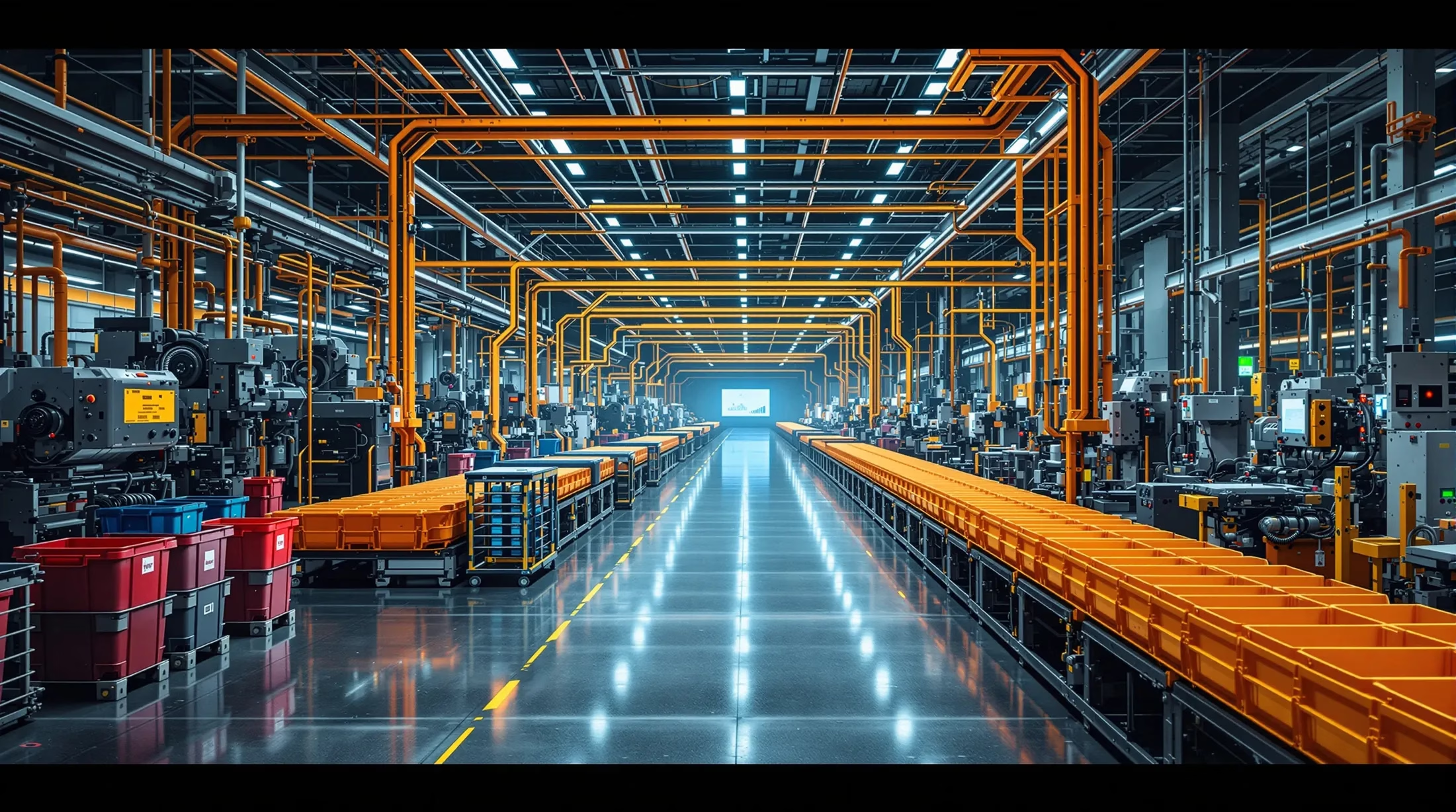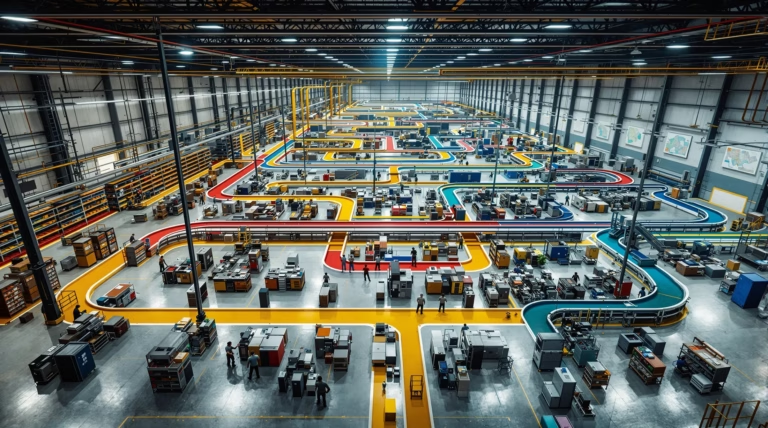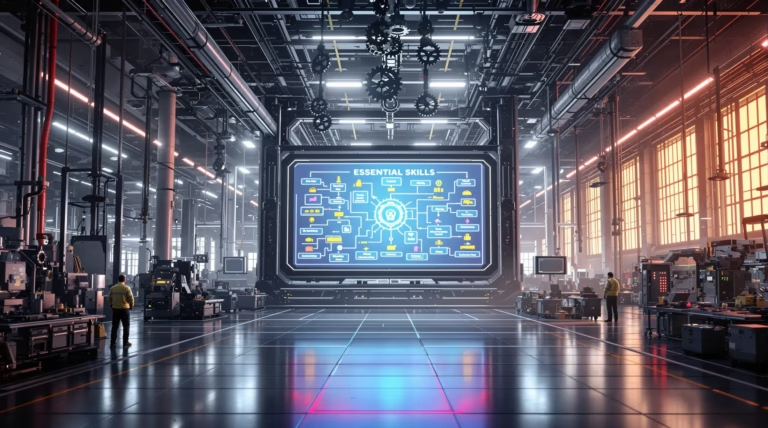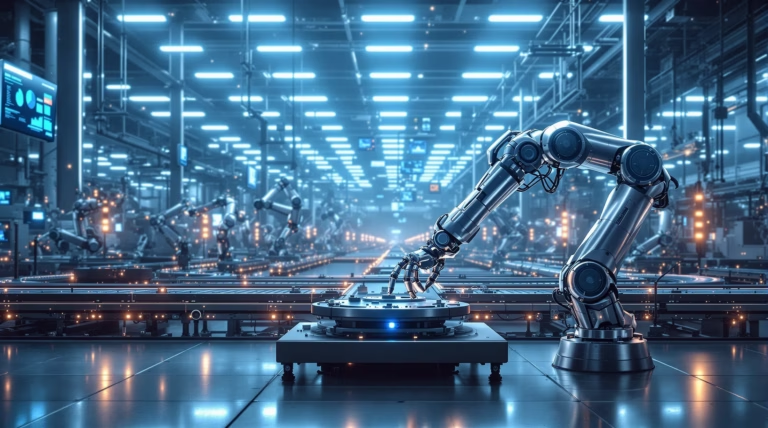Production Line Design: Key Strategies for Efficiency and Optimization
Effective production line design can transform manufacturing operations, leading to substantial improvements in efficiency and cost reduction. Let’s explore the essential components and strategies that make production lines successful in today’s competitive manufacturing environment.
Understanding Production Line Design
Production line design forms the backbone of manufacturing efficiency. It involves strategically arranging equipment, workstations, and personnel to create a seamless flow of materials from raw inputs to finished products. An effectively designed production line significantly impacts operational performance by reducing waste, minimizing transportation distances, and optimizing worker movements.
The fundamental goal of production line design is to create a manufacturing process that maximizes output while minimizing resources used. Organizations that invest time in thoughtful layout design often see dramatic improvements in productivity, with efficiency gains of 15-30% following layout optimization initiatives.
- Sequence of operations
- Material flow patterns
- Ergonomics considerations
- Safety requirements
- Space utilization
Key Elements of Production Line Design
Successful production line design incorporates several critical elements that work together to create an efficient manufacturing system. Input and output components manage the flow of materials through the transformation process, while carefully sequenced workstations ensure logical progression.
- Standardized work instructions at each station
- Material handling systems (manual or automated)
- Optimal process speeds for quality control
- Jidoka implementation for defect prevention
- Simple mechanical solutions over complex electrical ones
The Role of Layout Design in Production Efficiency
Layout design serves as the architectural blueprint for manufacturing success, directly influencing workflow efficiency, waste reduction, and overall productivity. A well-conceived layout can reduce cycle times by 10-30% when optimized properly.
| Layout Type | Characteristics | Best Suited For |
|---|---|---|
| Flow Layout | Sequential workstation arrangement | High-volume, standardized products |
| Cellular Layout | Semi-autonomous unit grouping | Similar product families |
| Process Layout | Similar equipment clustering | Diverse product requirements |
Strategies for Optimizing Production Line Design
Optimizing production line design requires a systematic approach to identifying and eliminating inefficiencies throughout the manufacturing process. Organizations that adopt strategic improvements typically see a 15-25% increase in production efficiency and up to 30% reduction in operational costs.
Implementing Lean Principles for Better Flow
Lean manufacturing principles provide a powerful framework for optimizing production flow and eliminating waste. Value stream mapping reveals that 60-70% of production activities add no direct value to the final product, presenting substantial opportunities for improvement.
- Implementation of pull systems over push-based production
- Kanban method for visual production signals
- 5S methodology for workspace organization
- Cycle time reductions of 30-50%
- Productivity improvements of 25-75%
Utilizing SMED and Low-Cost Automation
Single-Minute Exchange of Die (SMED) methodology transforms production flexibility by reducing changeover times between product runs. The process involves two key phases:
- Separating internal activities (requiring stopped equipment) from external ones (possible during operation)
- Converting 30-50% of setup tasks to external activities
- Simplifying fastening systems and standardizing tools
- Eliminating adjustments through precise fixturing
- Achieving 80-90% reduction in changeover times
Low-cost automation enhances SMED implementation through affordable technological improvements that boost production capabilities without major capital investment. These solutions include:
| Solution Type | Benefits | Implementation Impact |
|---|---|---|
| Gravity-fed systems | Improved material flow | Reduced manual handling |
| Pneumatic assists | Enhanced ergonomics | Decreased operator fatigue |
| Simple robotics | Increased efficiency | 15-25% productivity gain |
Technological Tools for Production Line Design
Advanced technological tools have revolutionized production line design by enabling virtual testing and optimization before physical implementation. These digital solutions create detailed virtual representations of manufacturing environments, allowing companies to identify bottlenecks and inefficiencies through simulation.
- 20-30% reduction in design time
- 15-25% improvement in space utilization
- Enhanced cross-departmental collaboration
- Integrated safety and ergonomic compliance
- Data-driven decision-making capabilities
The Impact of Factory Design Software
Modern factory design software has transformed production line planning by enabling comprehensive 3D virtual environments. Solutions like Siemens’ NX provide detailed digital representations of manufacturing facilities, including equipment dimensions, movement paths, and material flows.
The integration capabilities of these platforms deliver significant advantages:
- 15-20% faster project implementation
- 40% reduction in design revisions
- Real-time production metrics integration
- Digital simulation of production scenarios
- Enhanced spatial relationship visualization
Using Point Cloud Scan Data for Optimization
Point cloud scanning technology revolutionizes production line optimization by creating precise digital representations of existing facilities. This technology captures millions of measurement points, providing an accurate baseline for facility modifications and enabling precise comparison between virtual designs and actual conditions.
| Benefit | Impact |
|---|---|
| Implementation accuracy | 25-35% error reduction |
| Space utilization | 15-20% improvement |
| Retrofit planning | Enhanced precision |
Types of Assembly Lines and Their Benefits
Assembly lines form the foundation of modern manufacturing, offering specialized production systems that organize workers, equipment, and materials in logical sequences. The evolution from Henry Ford’s early models to today’s sophisticated systems demonstrates continuous innovation in manufacturing methodologies, delivering 30-50% efficiency improvements compared to non-linear production methods.
Exploring Different Types of Assembly Lines
Continuous flow assembly lines represent the classic model where products move at constant speeds through fixed stations, ideal for high-volume, standardized products like automotive manufacturing. These systems maximize efficiency through highly specialized workstations and predictable timing but require substantial initial investment and offer limited flexibility.
| Assembly Line Type | Key Characteristics | Best Application |
|---|---|---|
| Cellular | Compact, semi-autonomous units | Multiple product variants |
| Balanced | Evenly distributed workload | Consistent production flow |
| Flexible | Quick-change capabilities | Customization-focused markets |
| Automated | Robotics and computer controls | High-precision requirements |
Many successful manufacturers implement hybrid configurations that combine elements from multiple assembly types, creating customized solutions that address their unique production challenges and market demands.
Benefits of Efficient Assembly Lines
- 40-60% increase in output compared to workstation-based production
- 15-30% reduction in labor costs through task specialization
- 25-50% reduction in defect rates
- Optimized workflow with minimal material handling
- Reduced work-in-progress inventory
- Better resource utilization throughout the facility
Assembly lines enable manufacturers to scale production volumes rapidly in response to market demand, with modular designs allowing for capacity expansion without disrupting existing operations. Companies implementing efficient assembly systems gain competitive advantages through faster order fulfillment, reduced lead times, and the ability to maintain quality standards even during periods of high production volume – critical factors for success in today’s fast-paced manufacturing environment.







